The live-action adaptation of One Piece season 1 successfully captures the scope of the unique worldbuilding in Eiichiro Oda’s manga series. The Netflix series includes numerous manga and anime Easter eggs, such as character cameos, references to specific locations, and nods to iconic moments from the original story. Despite some differences from the source material, the live-action adaptation remains faithful to Oda’s story and incorporates small details that help bring the One Piece world to life in a new format.
This article will explore some of the most notable Easter eggs in One Piece season 1. From major character cameos to deep-cut namedrops these Easter eggs are a fun way for fans of the manga and anime to connect with the live-action series. They also serve as a reminder of the rich history and lore of the One Piece world. Whether you’re a longtime fan of One Piece or you’re just getting started, these Easter eggs are sure to make you appreciate the live-action series even more. So sit back, relax, and enjoy a trip down memory lane as we explore the hidden gems of One Piece season 1.
Lime Juice
The live adaptation of One Piece has left no stone unturned when it comes to paying homage to the source material. A delightful easter egg that fans have noticed is the inclusion of even the minor characters from the manga and anime. Take the character of “Lime Juice,” for example.
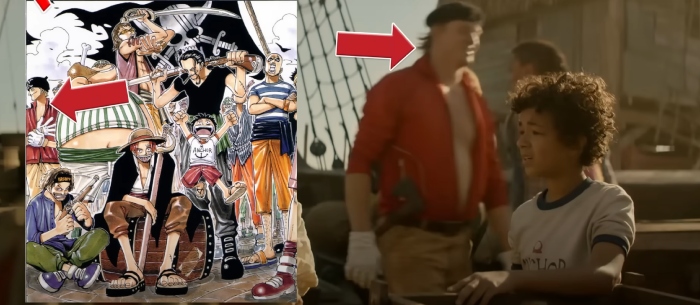
While not a significant figure in the grand scheme of things, this character’s presence shows that the creators are devoted to building an authentic One Piece universe. From the costume to the quirky mannerisms, everything about Lime Juice screams attention to detail. It’s these subtle inclusions that make the adaptation not just a retelling but an enriching extension of the original narrative.
Familiar One Piece Ships At The Beginning
The first scene of the live-action series shows a few familiar ships, including Gold Roger’s Oro Jackson and Mihawk’s paddleboat.

The Oro Jackson is a large ship that is said to be the fastest ship in the world. It is the ship that Gold Roger used to sail the seas and find the One Piece. Mihawk’s paddleboat is a small, simple boat that is perfect for a lone swordsman. It is a reminder of Mihawk’s humble beginnings and his dedication to his craft.
The News Coo Bird
The News Coo bird is a familiar sight in the One Piece world, and it also appears in the live-action series. The News Coo Bird delivers newspapers worldwide, and it’s a way for viewers to stay up-to-date on the latest news.
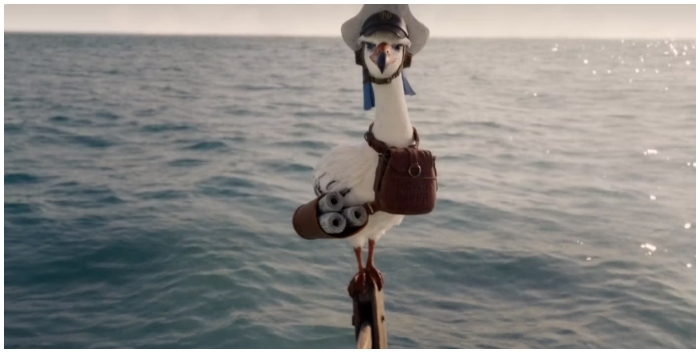
The News Coo bird symbolizes communication and information in the One Piece world. It is a reminder that even in a world of pirates and adventure, there is still a need for news and information. The News Coo bird’s appearance in the live-action series is an excellent way to stay faithful to the source material and show that the creators take the show seriously.
“War Continues On Broc Coli Island”
A newspaper headline in the live-action series mentions the island of Broc Coli, which is located in the New World. This is a small detail, but it’s a nice way to show that the live-action series is staying true to the source material.
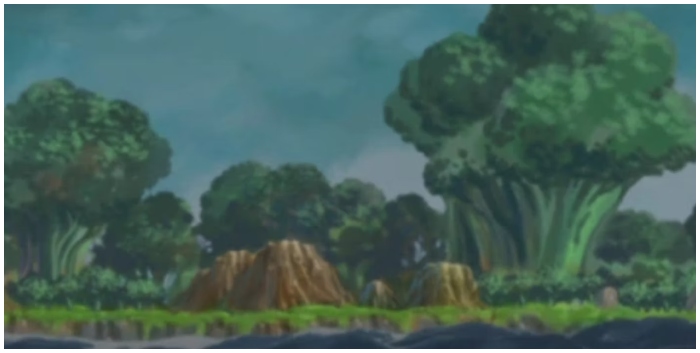
The island of Broc Coli is a fictional island that was first mentioned in the manga. It is located in the New World, which is the most dangerous part of the world.
Binks’ Sake Plays During Luffy’s Shanks Flashbacks
The song Binks’ Sake is popular in the One Piece world, and it can be heard playing in the live-action series during Luffy’s flashbacks of Shanks. This is a nice way to connect the live-action series to the manga and anime and shows how important music is in the One Piece world.
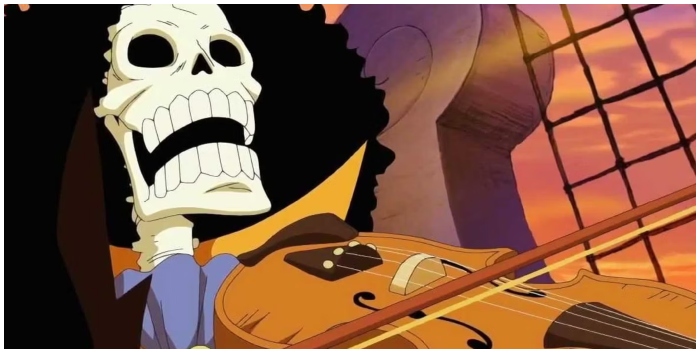
Binks’ Sake is a song often sung by pirates in the One Piece. It is a song about friendship and adventure, and it is a reminder of Luffy’s dream to become the Pirate King.
Zoro Fights The Original Mr. 7
Zoro’s introduction in the live-action series differs from how it happens in the manga or anime. In the live-action series, Zoro fights the original Mr. 7 of Baroque Works before he meets Helmeppo and Axe-Hand Morgan.
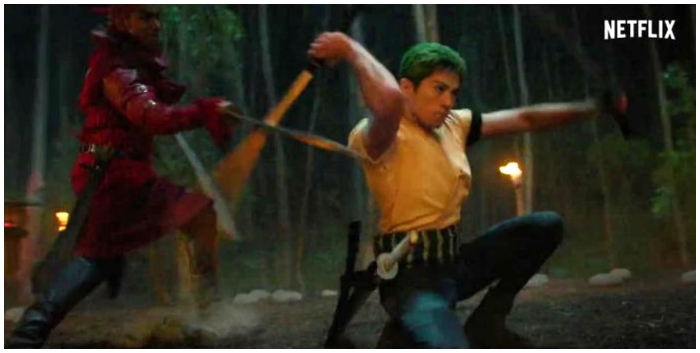
In the manga and anime, Zoro’s first fight is against the marine officer Helmeppo. However, in the live-action series, Zoro’s first fight is against Mr. 7, a member of the Baroque Works organization. This change allows Zoro to show his strength and fighting skills early in the series. It also sets up the Baroque Works organization as a significant threat the Straw Hat Pirates will face.
Young Mihawk, Shanks, & Smoker At Roger’s Execution
The live-action series begins with the execution of Gold Roger, and a few familiar faces can be seen in the crowd. Young versions of Mihawk, Shanks, and Smoker are all present, giving viewers a glimpse of what these characters will look like in the future.
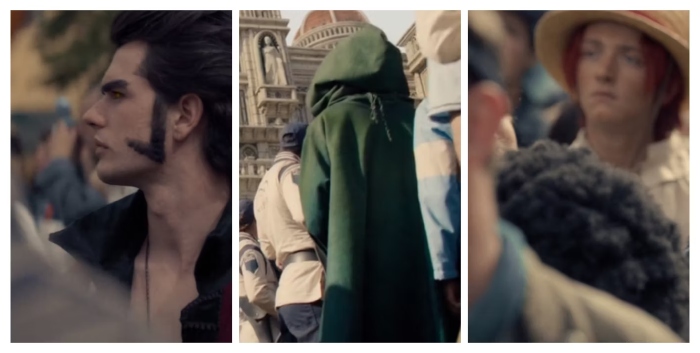
For example, young Mihawk is seen wearing a black coat and holding a sword, foreshadowing his future as a powerful swordsman. Young Shanks is seen wearing a red hat and carrying a straw hat, which is a reference to his future friendship with Luffy. Young Smoker is seen wearing a marine uniform, which is a foreshadowing of his future as a marine admiral.
Zoro Uses The Oni Giri On Mr. 7
Zoro’s signature move, the Oni Giri, is used against Mr. 7 in the live-action series. This is a nice way to show that the live-action series stays true to the source material and shows how powerful Zoro is.
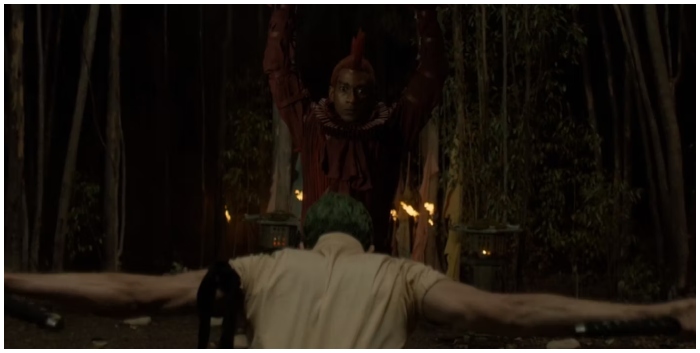
The Oni Giri is a powerful slash attack that Zoro uses to defeat his enemies. It is one of his most iconic moves.
Wanted Posters For Cavendish, Foxy, & Jango
Wanted posters for several One Piece characters can be seen in the live-action series. Some characters have already appeared in the series, while others have yet to debut.
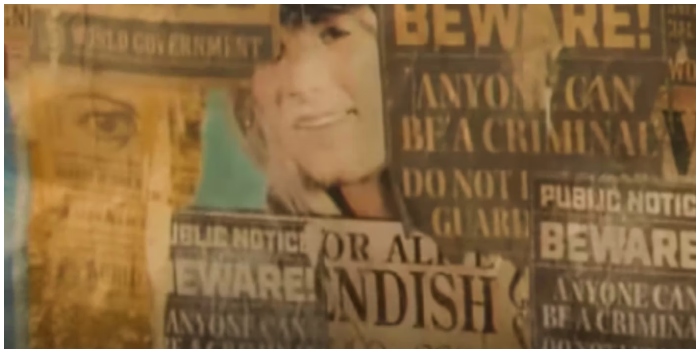
The wanted posters for Cavendish, Foxy, and Jango are an excellent way to tease future characters who will play a role in the series. They also show viewers that the live-action series is planning to adapt the manga and anime faithfully.
Luffy’s “Cotton Candy” Line References Chopper
When Luffy first sees Buggy’s circus, he asks if they have cotton candy. This is a throwaway line, but it’s most likely a reference to Chopper, who loves cotton candy.
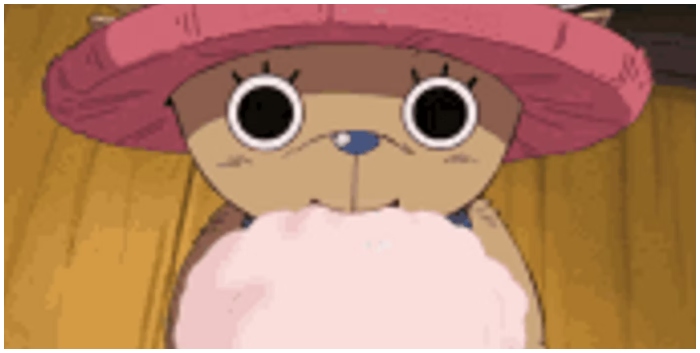
Chopper is a reindeer-human hybrid who loves cotton candy. He is a Straw Hat Pirates member and one of the most popular characters in the One Piece franchise. Luffy’s line about cotton candy is a nice way to foreshadow Chopper’s appearance in the live-action series. It also shows that the creators are paying attention to the details and are committed to making the live-action series as faithful to the source material as possible.
“Chibi Buggy” Appears In One Piece Episode 2
The live-action series skipped the adventures of “Chibi Buggy” on the Island of Rare Animals ahead of his encounter with Alvida. However, the Chibi Buggy design briefly appeared in live-action at the end of episode 2.
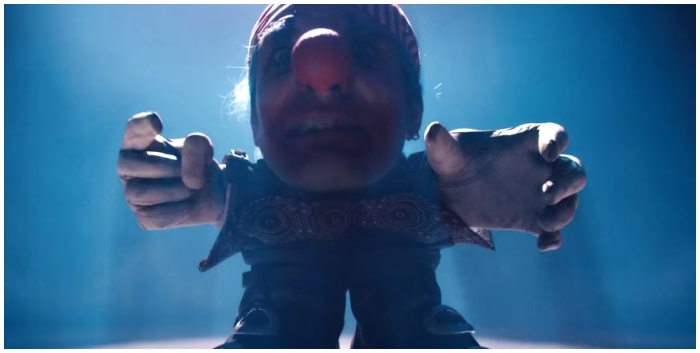
Chibi Buggy is a small, chibi-sized version of Buggy that appears in manga and anime. He is a result of Buggy being cut into pieces by Mihawk.
Orange Town’s Chouchou Has A Blink-Or-Miss Appearance
Chouchou, the dog from Orange Town, appears briefly in One Piece episode 2 after the Straw Hat pirates save the villagers. This is an excellent way to show that the creators stay true to the source material, even if they make some changes to the story.
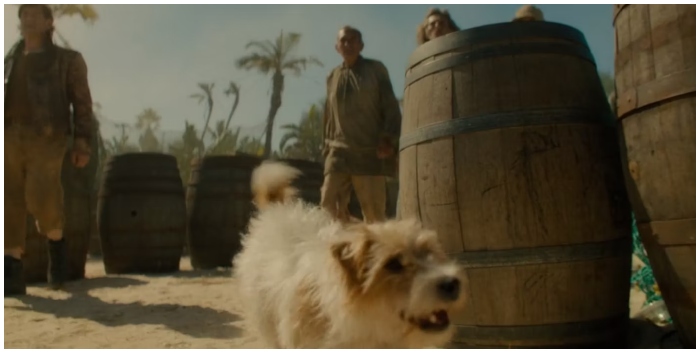
Chouchou is a small, brown dog owned by Genzo, the mayor of Orange Town. He is a loyal and friendly dog who is always happy to see the Straw Hat pirates.
Has Netflix’s One Piece Live-Action Already Cast Its Ace?
That’s a bonus: Strap in, One Piece aficionados! As Netflix readies its hotly-anticipated Season 2 of the live-action One Piece series, whispers about the casting of fan-favorite Portgas D. Ace are lighting up the internet. Season 1 was a thrill-a-minute romp through the East Blue Saga. If the next installment sticks to canon, we’ll meet Ace—a fire-controlling, fleet-burning powerhouse—in exotic places like Alabasta and Drum Island.
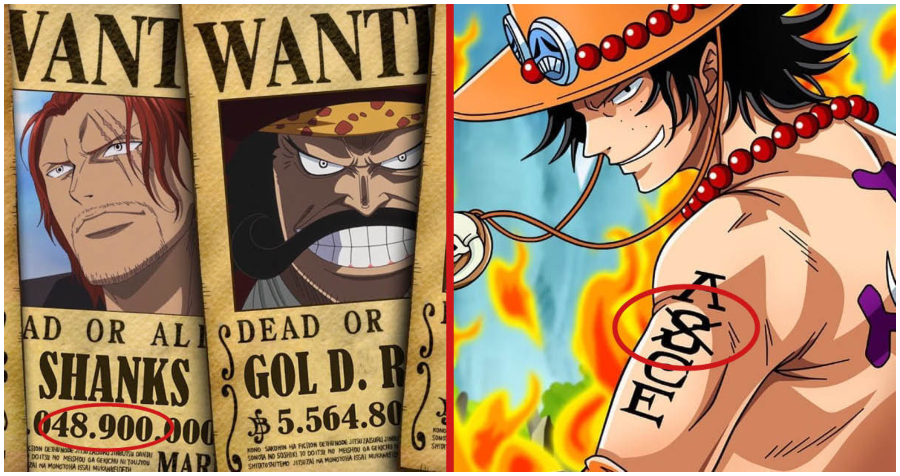
Who’s rumored to bring this sizzling character to life? All signs point to actor-musician Emery Kelly. Known for roles in “Alexa & Katie” and “Big Shot,” Kelly has dropped tantalizing hints. His social media profile showcases Ace, and he’s followed by none other than Luffy’s portrayer, Inaki Godoy, and showrunner Matt Owens! To keep us on our toes, series creator Eiichiro Oda teased the arrival of a beloved character in the new season. He didn’t confirm it’s Ace, but speculation is aflame. So, do you think the trail of clues leads to Emery Kelly as our Ace? The excitement is off the charts!
Mirror Ball Island’s Funky Bar Is Referenced In One Piece Episode 3
When Zoro tries to remember where he knows Klahadore from, he mentions the Funky Bar. The Funky Bar is located in the Mirror Ball Island, which is a location that has yet to be introduced in the live-action series.

The Funky Bar is a bar located on Mirror Ball Island. It is a popular hangout spot for pirates and other outlaws.
Kuro Cutting Luffy References Post-Time Skip Scar
Like the manga and the anime, Kuro and Luffy have a brief fight at the end of One Piece episode 4. Luffy defeats Kuro, but not before getting hit by the Captain of the Black Pirates’ claws. The pattern Kuro tried to cut Luffy matches Luffy’s chest scar from the post-time skip One Piece.

This is a nice way to connect the live-action series to the manga and anime and to show that the creators are paying attention to the details. Luffy’s chest scar results from a fight with Katakuri during the Whole Cake Island arc. The scar is a reminder of Luffy’s strength and determination and a symbol of his growth as a pirate.
Luffy’s Failed Jolly Roger Is Exactly Like The One In The Anime
Luffy’s first Jolly Roger has the same design as the manga and the anime. The only difference is that, in the original story, Luffy comes up with a Jolly Roger for the Straw Hat pirates after they meet Usopp. In the live-action, Luffy makes the Jolly Roger before the Syrup Village episodes.

However, the creators decided to change the circumstances of how Luffy came up with the Jolly Roger. In the live-action, Luffy is inspired to make the Jolly Roger after he sees the Jolly Roger of the Red Hair Pirates. Luffy’s Jolly Roger is a simple design that features a straw hat and a crossed pair of bones. It is a symbol of Luffy’s dream to become the Pirate King.
Mr. 7’s Design Is Based On Oda’s Doodle
The original Mr. 7 never appeared in the manga or anime. Still, his design was based on a doodle by One Piece author Eiichiro Oda. This is an excellent way to pay homage to the source material, and it also shows the attention to detail that went into the live-action series.
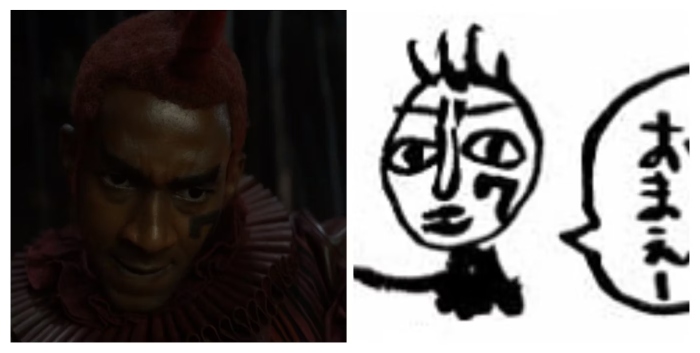
The doodle of Mr. 7 was drawn by Oda in a special section of the manga. It was the first time that Mr. 7’s appearance had been revealed.
Is Crocodile Actually a Female?
In the world of One Piece, mysteries abound, but one of the most tantalizing questions revolves around Crocodile, the fearsome founding member of the Cross Guild. Fans have been buzzing with theories that Crocodile might actually be—or have been—a female character. While definitive evidence is scarce, some compelling hints fuel this speculation. One unforgettable moment occurred during the Impel Down Arc when Emporio Ivankov, who possesses a Devil Fruit power capable of gender-swapping, hinted at a scandalous secret about Crocodile.
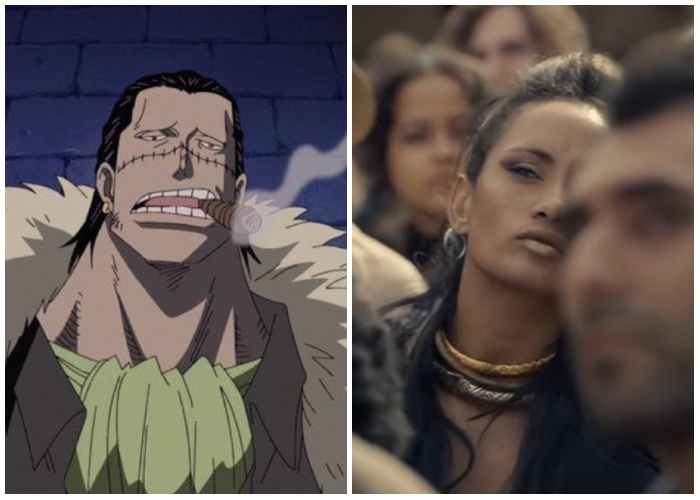
Given Ivankov’s abilities and the series’ openness to transgender characters, it’s not far-fetched to think that Crocodile might be hiding something significant. Adding fuel to the fire, series creator Eichiro Oda has hinted that Ivankov gave Crocodile an undisclosed “something,” leaving fans to speculate wildly. Although the theory of a ‘Femcroc’ isn’t confirmed, it’s a riveting possibility that keeps fans dissecting every detail.
Sanji Mentions Loguetown’s Bluefin Elephant Tuna
Sanji mentions the Bluefin Elephant at the Baratie’s Kitchen in One Piece episode 5. The Bluefin Elephant is a special type of fish that Sanji found in Loguetown, with ingredients from many parts of the world. Loguetown should be introduced right at the beginning of One Piece season 2, based on how season 1 ended.
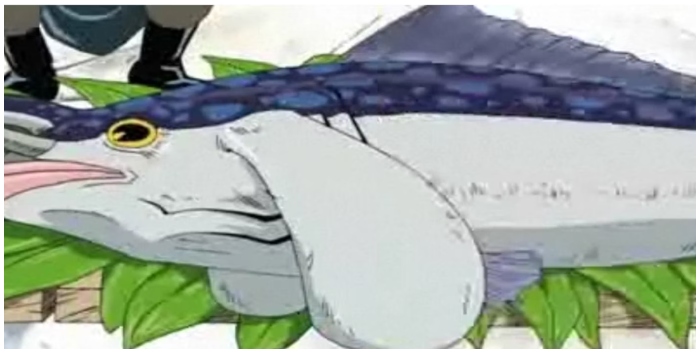
This is an excellent way to foreshadow the upcoming events and show that the creators plan to faithfully adapt the manga and anime. The Bluefin Elephant is a rare and delicious fish said to be the best in the world.
Kong Is Mentioned On The Credit Map
Kong, the World Government’s Commander in Chief, is referenced in One Piece’s ending credits map. Kong became the World Government’s Commander in Chief sometime between Gold Roger’s death and the beginning of One Piece. He was previously the Marine’s Fleet Admiral.
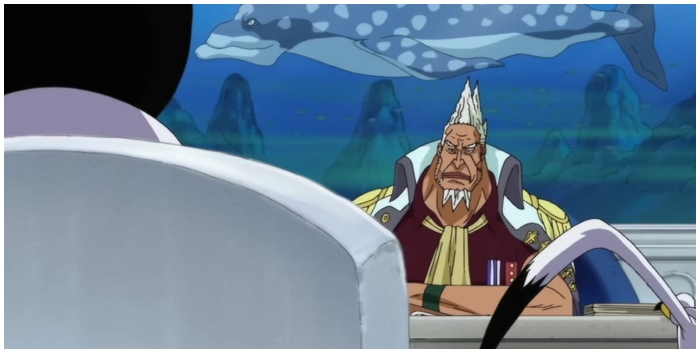
Kong is a powerful and influential figure in the One Piece world. He is the one who ultimately decides the fate of the world.
The Revolutionary Army Is Mentioned in a Newspaper
When Kaya is looking at Luffy’s Wanted Poster, there is a newspaper by the table. This newspaper mentions the Revolutionary Army. Introduced in Chapter #100, the Revolutionary Army is one of the most important organizations in the One Piece world. It will play a significant role in the live-action show should One Piece return for more seasons.
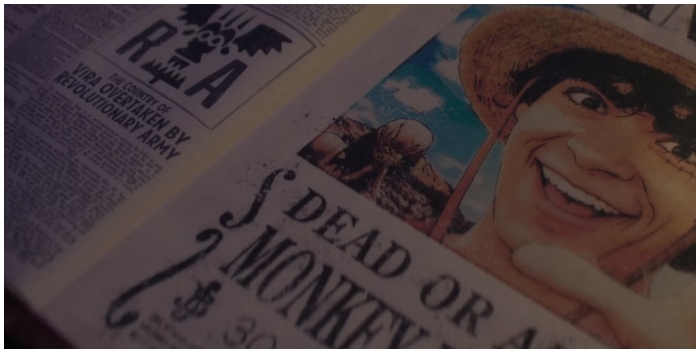
The Revolutionary Army is a group of rebels fighting against the World Government. The fact that the Revolutionary Army is mentioned in a newspaper is a subtle way to introduce the organization to viewers and to tease their eventual appearance in the live-action series.
Each One Piece Title Card References A Main Character
Each One Piece episode had a special title card. For example, in One Piece season 1, episode 1’s title card was designed after Luffy, whereas episode 2’s was designed after Buggy. Some of them also referenced specific designs from the anime, such as Usopp’s nose and Sanji’s eyebrows.
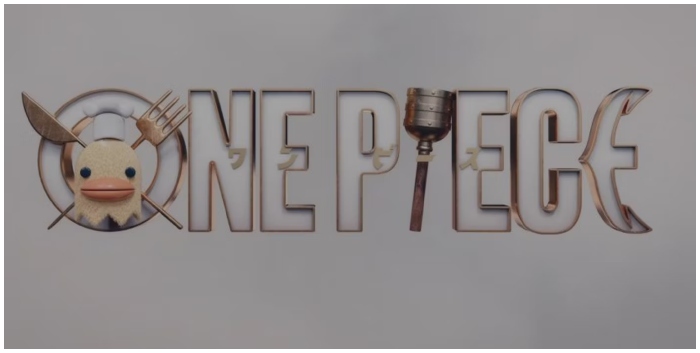
Sanji’s signature “heart eyes” were also referenced in one of the title cards.
Pandaman & Vivi’s Duck
Originating as a joke character by Eiichiro Oda, Pandaman has become an iconic Easter egg within the One Piece universe. In the live-action adaptation, you’ll spot his grass-like figure situated in the garden of Kaya’s mansion. It’s a nod that die-hard fans will definitely appreciate.
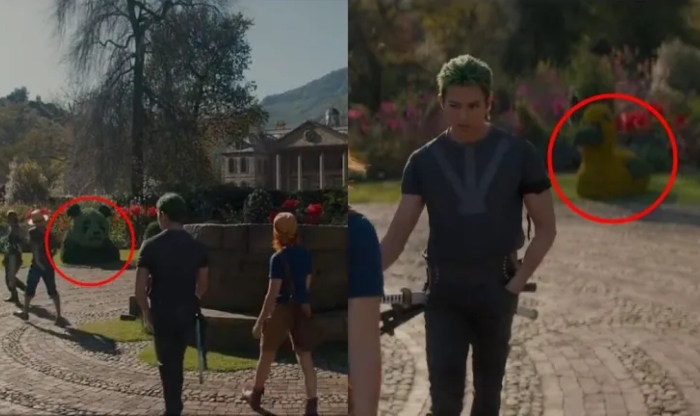
Sharing the screen with Pandaman is another figure made of grass—Karoo, the trusty pet duck of Nefertari Vivi. Its presence isn’t just adorable; it’s a herald signaling the next significant arc in the live-action series: “Alabasta.”
Reverse Mountain
If you’re a “One Piece” enthusiast, you’ll get a kick out of this: Reverse Mountain isn’t just an ordinary geographical feature in the series; it’s a gateway to adventures, and yes, it serves as a live-action Easter egg too! First appearing as the inaugural Grand Line checkpoint for the Straw Hat Pirates in the original manga and anime, Reverse Mountain gets a subtle nod in the third episode of “One Piece Live Action.” As Nami studies a map, her gaze lingers on a point, which fans instantly recognize as the Grand Line’s fabled entrance.
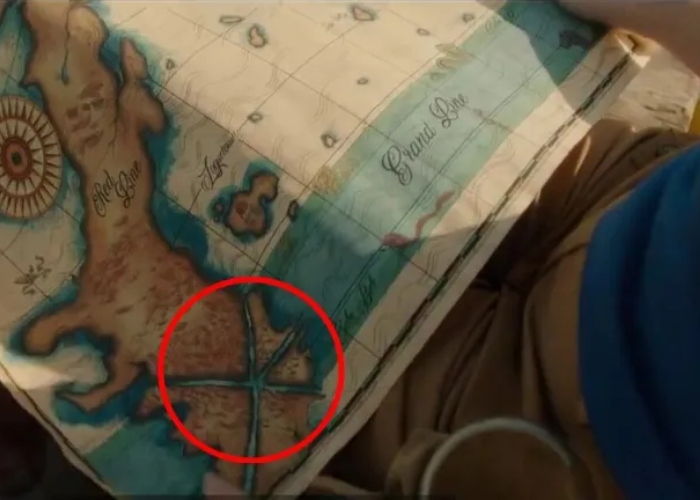
Located where the four Blues converge and part of the formidable Red Line, Reverse Mountain is a place steeped in lore. It’s where Luffy first encounters Laboon and learns about the Roger Pirates’ doctor. So, when you spot it in the live-action series, know you’re in for a treat filled with nods to the epic saga’s rich history. Keep an eye out for this and other Easter eggs as you sail through the live-action adaptation!
Noland & Jaya Are Mentioned
Mont Blanc Noland, the admiral who visited the Grand Line multiple times and lived to tell the story, was referenced in One Piece season 1, episode 6. Jaya, the island where Noland found a city of gold, was referenced in One Piece episode 7. The story of Mont Blanc Nolan was first told in One Piece Chapter #286.
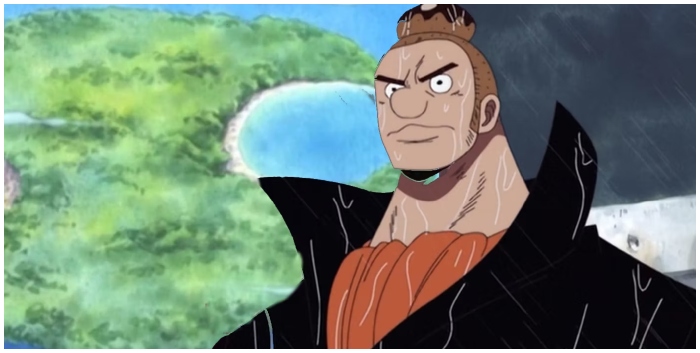
Mont Blanc Noland is a legendary figure in the One Piece world. He is known for his bravery and his willingness to help others. Jaya is a mysterious island that is said to be filled with treasure. It is a place that many pirates dream of visiting.
Zoro’s Sense Of Direction Is Manga Accurate
When Zoro and Luffy reunite outside of Kaya’s house in One Piece episode 4, Luffy asks Zoro how he managed to find him. Zoro says that he was not trying to find Luffy but was instead trying to get back into the house. Zoro getting lost could not have been more One Piece manga accurate.
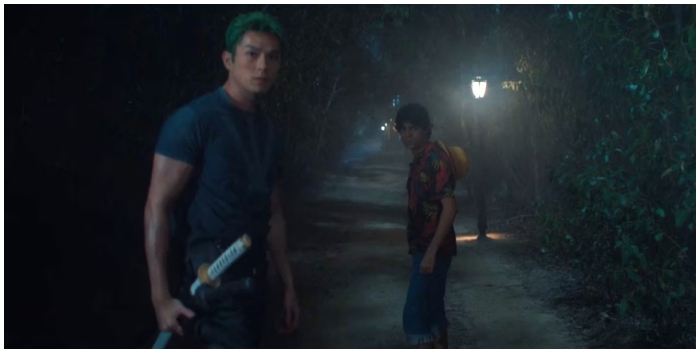
Zoro’s sense of direction is notoriously bad. He is often lost, even when he is following a map.
Jinbe Is Referenced In One Piece Episode 7
When Arlong and Nezumi talk about how the world treats fishmen, Nezumi says that one of the Seven Warlords of the Sea is a fish-man. This subtly references Jinbe, the fish-man who eventually joins the Straw Hats. Jinbe debuted in One Piece Chapter #528, so, interestingly, he is referenced in the live-action series so early on. This could signify that the creators plan to introduce Jinbe in a future season.
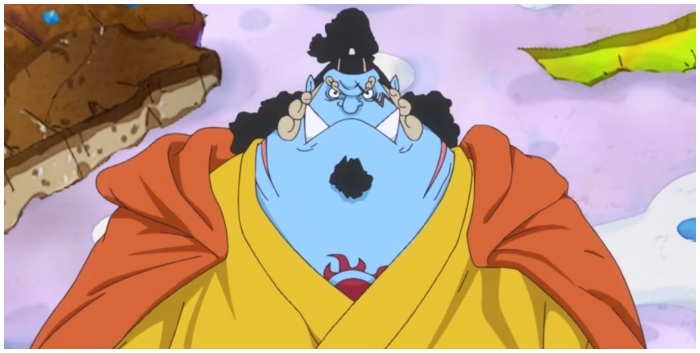
Jinbe is a powerful fishman who is also a skilled martial artist. He is a Sun Pirate member and one of the Seven Warlords of the Sea.
Another Jinbe Reference
One intriguing easter egg appears in a scene involving Nami’s notebook, where she’s been drawing maps and illustrations. The notebook subtly hints at Nami’s skill in cartography, but eagle-eyed fans will notice a drawing of ruins that could be a nod to Jinbei’s cover story from the manga.

The ruins sketch aligns closely with the ancient structures found in Jinbei’s background arc, making this a potential hidden gem. This could either be a foreshadowing of Jinbei’s eventual appearance in the live adaptation or a simple wink to long-time fans. Either way, the detail serves as a testament to how carefully the creators have woven in elements from the expansive One Piece lore.
Fishman Karate & Water Bullet Technique Appear
Much of the Arlong Park battle was not in One Piece’s live-action show, namely the underwater portion. However, some Fishman Karate moves appeared on screen. Kuroobi, who fought Buggy and Sanji before the Arlong Park episodes, also used the Watter Bullet technique.
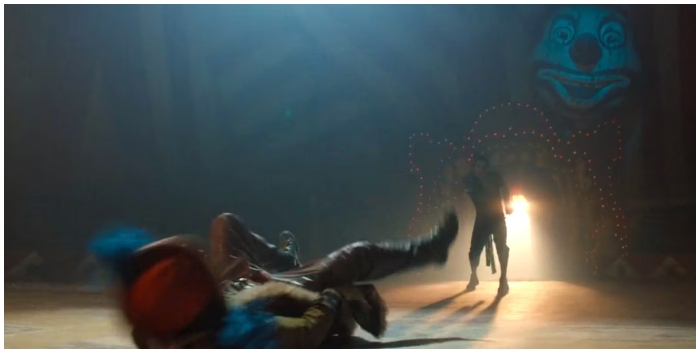
Fishman Karate is a martial art that is used by fishmen. It is a powerful fighting style that is based on the use of water. The Water Bullet technique is a powerful attack that uses water to create a powerful blast.
Island of Rare Animals Is Referenced In The Ending Credits
The Island of Rare Animals did not appear in Netflix’s One Piece season 1. Neither the Straw Hats stopped there before the Baratie episodes, nor did Buggy end up there after his fight with Luffy. The Island of Rare Animals was referenced in One Piece’s ending credits map.
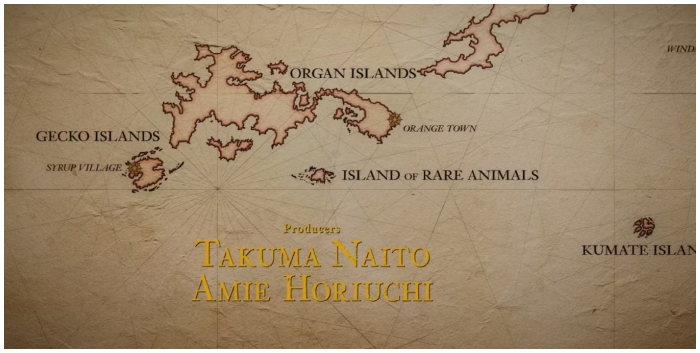
The Island of Rare Animals is where many rare and exotic animals can be found.
Momoo Appears In The Credits Map
Momoo is not in Netflix’s One Piece season 1, which makes sense considering how difficult it would be to bring this character into live-action. However, Momoo was at least referenced in the show. The giant sea cow appears in the credits’ world map.
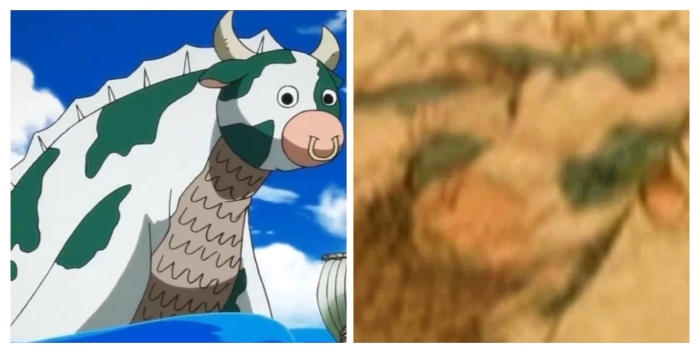
This is a nice way to pay homage to the character and show that the creators know the One Piece lore. Momoo is a giant sea cow that is said to be the size of an island.
We Are! Is Combined With The One Piece OST Twice
“We Are!” the song in the first One Piece anime intro, was combined with the live-action One Piece score twice. “We Are!” can be heard at the end of One Piece episode 4, when the Straw Hat pirates were leaving Syrup Village.
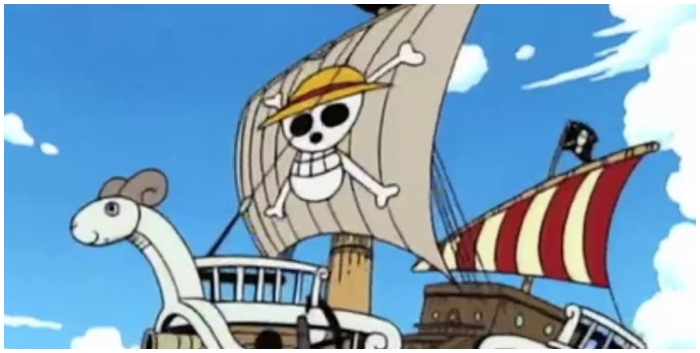
After the Straw Hats’ barrel scene, the song was also used in One Piece season 1’s ending. “We Are!” is a popular song many One Piece fans love.
Paintings At Baratie Restaurant
Attention to detail is the name of the game when it comes to “One Piece Live Action,” especially when you step into the floating culinary haven known as Baratie. Netflix has left no stone unturned in replicating the restaurant’s aesthetic straight from the original manga, but the pièce de résistance has to be the paintings adorning the walls.
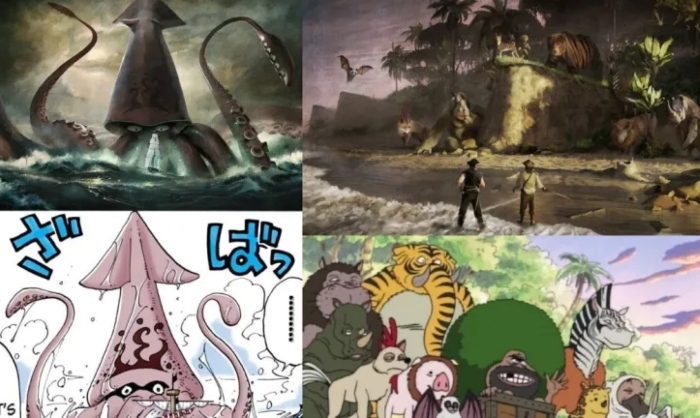
The first painting sets the stage for future events, showcasing the Royal Squid—a creature that Luffy and his crew encounter upon venturing into the Grand Line. Then there’s the second artwork, which offers a delightful nod to long-time fans. It features the Island of Rare Animals and even includes the beloved Gaimon. While Gaimon himself might not appear in live-action, his essence is captured through this artful Easter egg.
Nami’s Bo Staff
In the world of “One Piece,” attention to detail pays off, especially when Nami wields her not-so-ordinary Bo staff at Shells Town. While new fans may think it’s just another weapon, aficionados know it as the “Clima-Tact.” This iconic staff first graces the series when the Straw Hats arrive in Alabasta, courtesy of Usopp’s inventive genius.
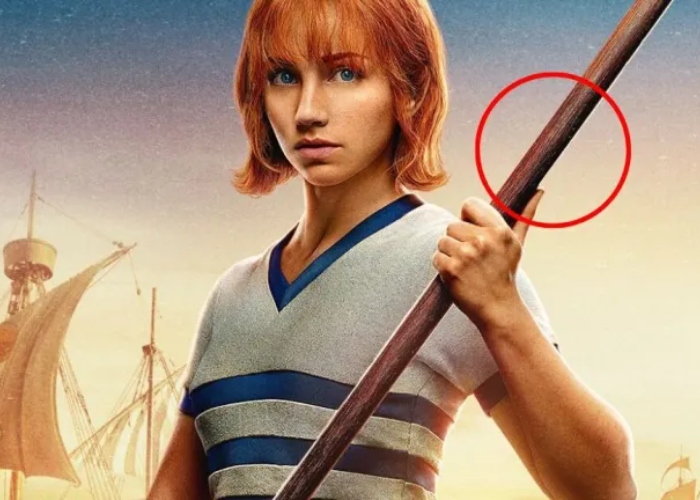
Designed to meet Nami’s exacting standards, the Clima-Tact is more than a staff—it’s a multitool. With features like adjustable length, which also appears in the live-action version, it encapsulates Nami’s cunning and resourcefulness. So, whether you’re a newcomer or a die-hard fan, the Clima-Tact serves as a thrilling glimpse into the layered complexity that makes “One Piece” a storytelling masterpiece.